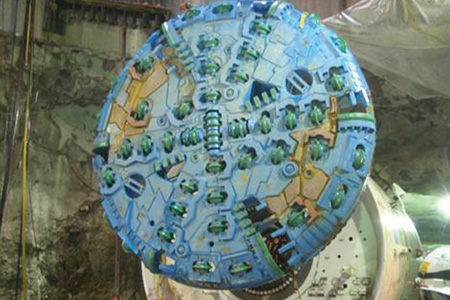7 Ways To Optimize Your Water Utility
By Scott Haskins, senior VP and director of strategic consulting, CH2M HILL
Streamlining utility management and operations yields significant savings.
Do more with less” is a mantra that many companies and individuals have adopted over the past several years as they look for opportunities to streamline operations and manage budgets and resources more efficiently. Water utilities and public works agencies are no different. Recently, we have seen a trend in utility optimization as a way to operate water and wastewater systems more effectively, better manage limited budgets, and identify efficiencies to generate additional revenue.
Utility optimization is similar to managing a household budget. When considering personal finances, a monthly budget that takes into consideration total income versus total living costs is beneficial in helping trim expenses and spend dollars more effectively. On a grand scale, this is what many utilities and public works agencies are doing. Rather than settling for a historically based plan and budgeting approach, advancements in best practices and technology have given utilities access to new tools and models for analyzing multiple alternatives to find the optimal solution to streamline business processes, manage capital spending and funding needs, make better decisions, train staff, and enhance facilities to ultimately lower costs.
Operating and maintaining water infrastructure is costly, especially given that much of the United States’ aging water infrastructure needs repair or replacement. Combine this with stricter environmental regulations and customer demands, and it’s easy to see why utilities and public works agencies are looking for ways to streamline operations and do more with less while meeting safety, service, operational, and financial goals. Utility optimization involves finding the most favorable solution to generate cost savings and greater economic benefits for water and wastewater systems, while maintaining desired levels of service and managing risk.
When streamlining utility management and operations, there are seven things to consider:
- Cost efficiency: Identify early wins to get buy-in from stakeholders and provide the best value for taxpayers’ dollars.
- Risk management: Establish mitigation plans to more effectively manage risk and avoid surprises.
- Maintenance effectiveness: Enhance reliability and reduce life cycle costs for assets.
- Service levels: Continually improve regulatory compliance, customer service expectations, and design standards.
- Sustainability: Approach green infrastructure opportunities, energy, and consumables holistically to maximize triple-bottom-line benefits.
- Knowledge transfer: Share knowledge across organizations through training and documentation of best practices and procedures.
- Technology: Invest in smart infrastructure and new technology to improve performance and overall efficiency.
Utility Optimization In Action: 3 Examples
The City of Columbus’ Department of Public Utilities (DPU), one of the largest water, sewer, stormwater, and power utilities in the U.S., began its optimization journey in 2008 by adopting an asset management approach. DPU now implements a more rigorous business case analysis process before starting major capital improvement projects. Rather than delaying necessary upgrades and asset replacements until after system failures, DPU has developed long-range, data-driven infrastructure failure models that outline optimal levels of investment to replace and upgrade proactively to avoid service interruptions.
In 2010 and 2011, DPU evaluated operations at its two wastewater treatment plants and three water treatment plants for potential energy and chemical savings. Using asset management tools and process models, each plant was analyzed, and potential opportunities were identified, taking into consideration the feasibility and cost of necessary improvements when compared to the financial and operations gains.
Since beginning its optimization initiative, DPU has saved millions, avoiding $55 million in capital and operations expenditures as a result of a $7 million investment. DPU will continue to keep operating costs down through its ongoing strategic plan, commitment to optimization, and further important recalibration of its maintenance and reliability efforts.
The City of Cincinnati’s Greater Cincinnati Water Works (GCWW) and the Metropolitan Sewer District of Greater Cincinnati (MSDGC), Ohio’s largest water and wastewater utilities, providing drinking water and wastewater services to approximately 800,000 people, are leading the industry in terms of adopting transformative utility optimization practices. In an environment when budgets are strained, the city adopted an innovative, risk-based, asset-management approach to reduce maintenance costs, saving $5 million annually, while maintaining its high-quality utility services.
The MSDGC operates and maintains 3,000 miles of combined and sanitary sewers, high- and low-pressure force mains, seven treatment plants, approximately 130 pump and lift stations, several package plants, real-time control facilities, high-rate treatment plants, levees, dams, and floodgates to protect the Mill Creek Valley. Annual operating costs are $180 million. The GCWW provides more than 130 million gallons of water a day to several counties in Ohio and Kentucky. Before distributing to customers, drinking water is tested more than 600 times from the source through the distribution system to ensure the highest quality.
To comply with regulatory requirements, GCWW and MSDGC needed costly infrastructure improvements. Looking across both utilities, Cincinnati identified numerous ways to improve the effectiveness of its water and wastewater operations, including opportunities to save money by reexamining policy and administrative procedures. One example includes changing GCWW’s policy to replace 30 miles of pipe every year at a cost of $40 million. The savings from replacing pipes based on risk rather than a set annual rate allowed the utility to make other more critical investments. Additionally, MSDGC and GCWW are combining administrative services to save between $68 million and $105 million over a 10-year period. Identifying quick wins and working with a bottom-up and top-down approach, Cincinnati is transforming the way it operates to keep costs low for ratepayers.
Taking a long-term, community-wide approach to major investments, Cincinnati is effectively considering green infrastructure alternatives, economic development, and environmental and social costs, benefits, and risks. They are also engaging their workforce in new technology and maintenance efforts. Working with consultant experts, the city has developed strategic plans to align the utility missions with customer service level expectations, asset reliability, regulatory compliance, organizational efficiency, employee development, financial viability, and community sustainability. Additionally, MSDGC has been recognized for Excellence in Management by the National Association of Clean Water Agencies (NACWA) for their significant efforts toward improved efficiency and effectiveness. The utility was also the recipient of Uptime Magazine’s 2013 “Best Emerging Maintenance Reliability Program.”

DPU utilized a business case evaluation approach to optimize its investment in the OARS Deep Sewer Tunnel and save $7.6M. DPU determined it could reduce the size of the tunnel’s surge shafts without significantly increasing its risk exposure. (Credit: City of Columbus Dept. of Public Utilities)
Boston Water and Sewer Commission (BWSC) owns and operates New England’s oldest and largest water and sewer system, providing water and sewer services to more than 1 million people through 1,500 miles of sewers and 1,000 miles of distribution piping. BWSC has faced increasing challenges managing and maintaining its aging infrastructure, including more intense storm events and regulatory scrutiny. Despite these hurdles, BWSC has been able to provide rapid response to system failures, while recognizing the need to become proactive about identifying system needs before failures occurred.
Through a comprehensive facilities planning, asset management, and CMOM (capacity, management, operations, and maintenance) program, BWSC is able to respond quickly to system problems, provide comprehensive reporting to regulators, identify needed infrastructure repairs, and proactively plan for capital improvement projects. Numerous operational improvements are being implemented to dramatically increase system inspections and maintenance activities with limited staff through efficient field tablet applications, sophisticated risk-based task prioritization tools, and workflow mapping and streamlining. The program began in 2011 and is approximately halfway through the planning stage, but BWSC has already made many significant changes to improve the function of their organization and meet their goals.
Conclusion
Utilities across the United States are following suit, looking for ways to reduce costs and stretch limited budgets. By conducting diagnostic assessments and taking a proactive approach through asset management, utilities and public works agencies can better identify focus areas and prioritize capital improvement projects based on asset performance. Sometimes simple solutions, like eliminating duplicate work processes or postponing expensive replacement or rehabilitation projects, can yield immediate savings and lead to long-term solutions.
 Scott Haskins is a senior VP and director of strategic consulting at CH2M HILL. He’s active in leadership roles with water sector associations, serves on the EPA’s Environmental Finance Advisory Board, and has been engaged in numerous finance, asset management, benchmarking, and utility management water research projects.
Scott Haskins is a senior VP and director of strategic consulting at CH2M HILL. He’s active in leadership roles with water sector associations, serves on the EPA’s Environmental Finance Advisory Board, and has been engaged in numerous finance, asset management, benchmarking, and utility management water research projects.
